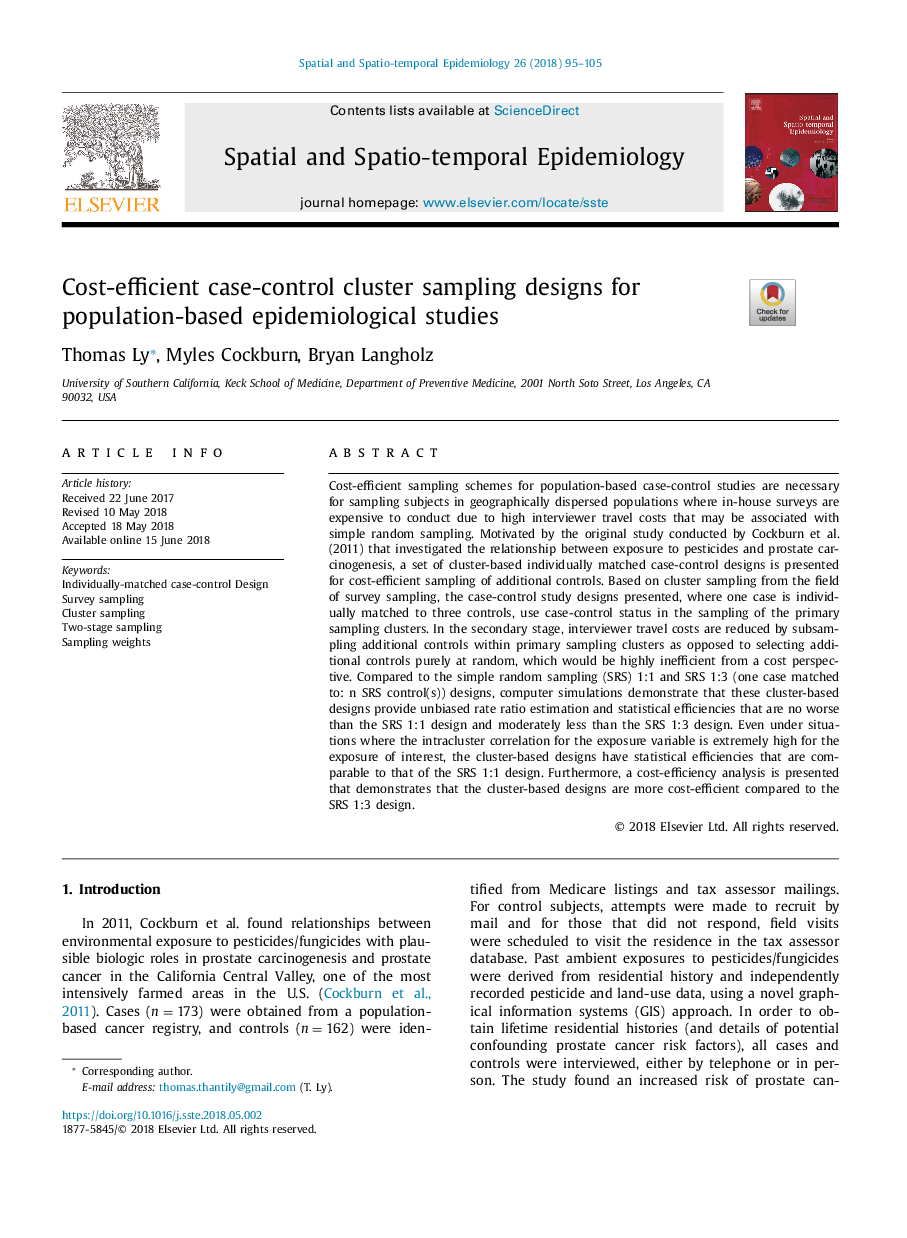| کد مقاله | کد نشریه | سال انتشار | مقاله انگلیسی | نسخه تمام متن |
|---|---|---|---|---|
| 7495735 | 1485752 | 2018 | 11 صفحه PDF | دانلود رایگان |
عنوان انگلیسی مقاله ISI
Cost-efficient case-control cluster sampling designs for population-based epidemiological studies
ترجمه فارسی عنوان
طرحهای نمونه گیری خوشه ای کنترل هزینه های کارآمد برای مطالعات اپیدمیولوژیک مبتنی بر جمعیت
دانلود مقاله + سفارش ترجمه
دانلود مقاله ISI انگلیسی
رایگان برای ایرانیان
کلمات کلیدی
طراحی مورد - شاهد به طور جداگانه، نمونه برداری، نمونه گیری خوشه ای، نمونه برداری دو مرحله ای، وزن نمونه برداری،
موضوعات مرتبط
علوم پزشکی و سلامت
پزشکی و دندانپزشکی
سیاست های بهداشت و سلامت عمومی
چکیده انگلیسی
Cost-efficient sampling schemes for population-based case-control studies are necessary for sampling subjects in geographically dispersed populations where in-house surveys are expensive to conduct due to high interviewer travel costs that may be associated with simple random sampling. Motivated by the original study conducted by Cockburn et al. (2011) that investigated the relationship between exposure to pesticides and prostate carcinogenesis, a set of cluster-based individually matched case-control designs is presented for cost-efficient sampling of additional controls. Based on cluster sampling from the field of survey sampling, the case-control study designs presented, where one case is individually matched to three controls, use case-control status in the sampling of the primary sampling clusters. In the secondary stage, interviewer travel costs are reduced by subsampling additional controls within primary sampling clusters as opposed to selecting additional controls purely at random, which would be highly inefficient from a cost perspective. Compared to the simple random sampling (SRS) 1:1 and SRS 1:3 (one case matched to: n SRS control(s)) designs, computer simulations demonstrate that these cluster-based designs provide unbiased rate ratio estimation and statistical efficiencies that are no worse than the SRS 1:1 design and moderately less than the SRS 1:3 design. Even under situations where the intracluster correlation for the exposure variable is extremely high for the exposure of interest, the cluster-based designs have statistical efficiencies that are comparable to that of the SRS 1:1 design. Furthermore, a cost-efficiency analysis is presented that demonstrates that the cluster-based designs are more cost-efficient compared to the SRS 1:3 design.
ناشر
Database: Elsevier - ScienceDirect (ساینس دایرکت)
Journal: Spatial and Spatio-temporal Epidemiology - Volume 26, August 2018, Pages 95-105
Journal: Spatial and Spatio-temporal Epidemiology - Volume 26, August 2018, Pages 95-105
نویسندگان
Thomas Ly, Myles Cockburn, Bryan Langholz,
